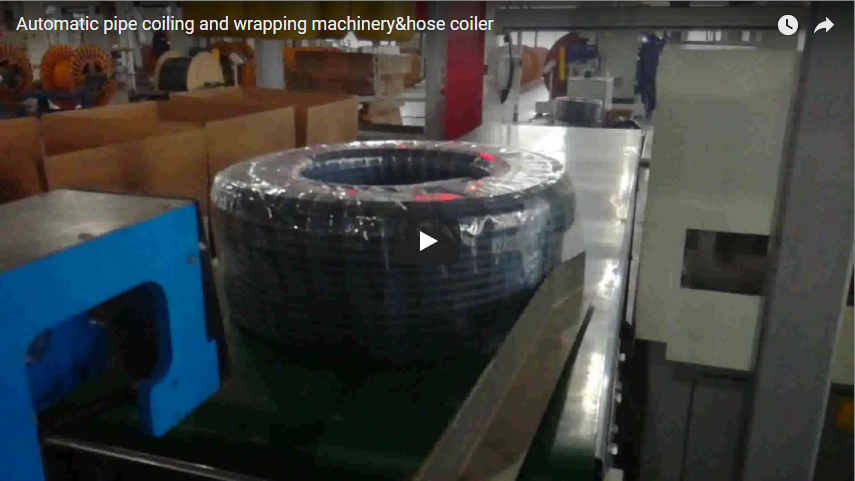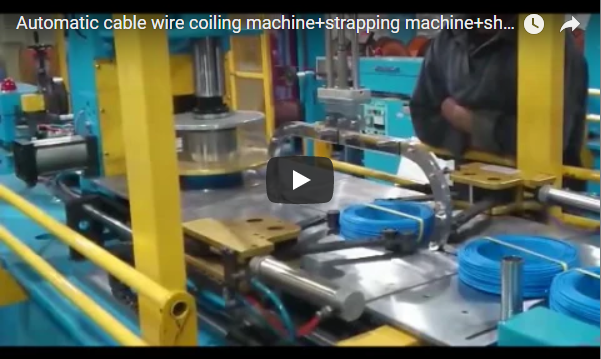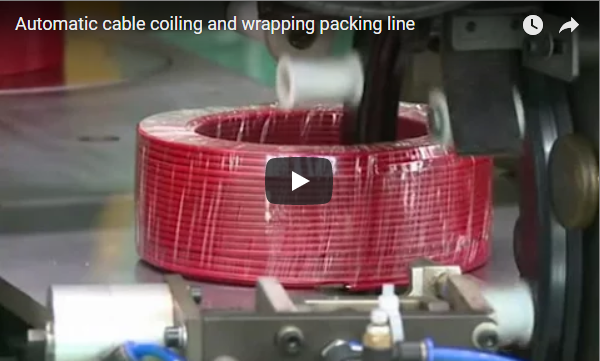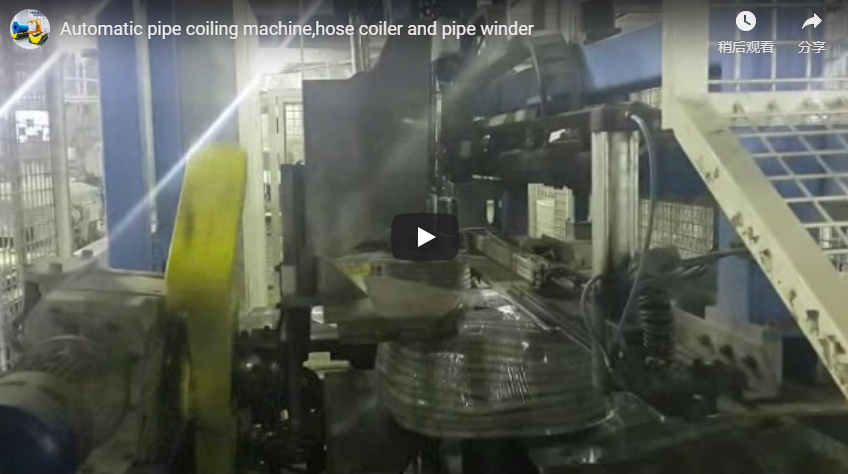Enhancing Operational Efficiency with Automatic Pipe Coiling and Strapping Systems
In today's competitive industrial landscape, manufacturers and distributors constantly seek avenues to optimize production lines, reduce operational costs, and improve product handling. Manual processes for coiling and strapping pipes, tubes, and hoses are often labor-intensive, inconsistent, and present potential safety hazards. The adoption of automatic pipe coiling and strapping machine technology offers a robust solution, delivering significant gains in efficiency, quality, and safety, particularly vital in sectors like plastics extrusion, construction materials, automotive components, and telecommunications cabling.
Core Functionality: How Automatic Coiling and Strapping Works
Automatic pipe coiling and strapping systems are engineered to streamline the end-of-line packaging process for continuous length products like pipes and tubing. These integrated machines automate a sequence of operations typically involving:
- Product Infeed & Length Measurement: The pipe or tube, often fed directly from an extrusion line or payoff stand, enters the coiler. Precision sensors or encoder wheels accurately measure the product to ensure consistent coil lengths as per pre-set parameters.
- Coiling/Winding: The product is wound onto a coiling head or mandrel. Advanced systems utilize servo-driven traversing mechanisms for precise layering, creating stable, uniform coils. Coiling heads are often designed to be collapsible for easy coil removal. Research highlights the importance of controlled tension during winding to prevent product deformation, particularly crucial for sensitive materials (Source: Plastics Technology analysis on extrusion downstream equipment).
- Automatic Cutting: Once the desired length is reached, an integrated cutting unit (e.g., pneumatic guillotine, rotary blade) cleanly severs the product.
- Coil Transfer & Strapping: The completed coil is typically transferred automatically to a strapping station. Multiple straps (commonly Polypropylene - PP, or Polyethylene Terephthalate - PET) are applied at pre-determined positions using technologies like heat sealing or friction welding, securing the coil for handling and transport. Patent advancements (e.g., US Patent 8,910,567 B2) often focus on optimizing the speed and reliability of the coil transfer and strapping sequence.
- Coil Ejection/Discharge: The finished, strapped coil is ejected onto a conveyor, accumulator table, or tilting mechanism for removal or integration into further automated packaging steps like palletizing.
Key Features Driving Performance and Efficiency
Modern automatic pipe coiling and strapping machines incorporate several technological advancements designed to maximize output and reliability:
Precision Coiling & Tension Control
Achieving consistent coil dimensions and density is paramount. Systems employ sophisticated tension control mechanisms (dancers, load cells) and servo-controlled winding patterns to ensure product integrity and facilitate stable stacking and storage. This level of precision significantly reduces issues related to coil collapse or product damage during transit.
Automated Cutting & Strapping Technology
High-speed, reliable cutting and strapping units minimize cycle time. Strapping heads are designed for efficiency and minimal maintenance, supporting various strap types and tensions. Configurable strapping patterns allow users to optimize coil security based on product size and weight.
Variable Speed Operation & Synchronization
Crucially, the coiler's speed can be precisely synchronized with the upstream production line (e.g., extruder output). This prevents undue tension or slack in the product, maintaining dimensional accuracy and preventing process disruptions. This synchronization is often managed via dancer arms or direct communication protocols.
Programmable Logic Controllers (PLCs) & Human-Machine Interfaces (HMIs)
Intuitive touchscreen HMIs allow operators to easily set parameters (coil length, diameter, strap positions), store recipes for different products, monitor machine status, and access diagnostic information. PLCs provide the core control logic, ensuring repeatable and reliable operation.
Integration Capabilities (Industry 4.0 Ready)
Many modern machines are designed for seamless integration into larger production systems. Features include:
- Data Logging: Tracking production counts, cycle times, and fault codes.
- Remote Monitoring & Diagnostics: Enabling off-site troubleshooting and support.
- MES/ERP Connectivity: Facilitating real-time data exchange for production planning and inventory management via protocols like OPC-UA. (Source: Industrial Distribution feature on Smart Factory integration).
Enhanced Safety Systems
Operator safety is paramount. Machines are equipped with comprehensive safety features, including physical guarding, safety interlocks on access doors, light curtains at entry/exit points, and clearly marked emergency stop buttons, complying with relevant safety standards (e.g., OSHA, CE).
Tangible Benefits and Return on Investment (ROI)
Implementing automatic coiling and strapping technology yields significant operational and financial advantages:
Increased Throughput & Production Speed
Automation drastically reduces the time required for coiling and strapping compared to manual methods. Consistent cycle times and the potential for continuous operation (24/7) significantly boost overall production output, allowing manufacturers to meet demanding delivery schedules. Cycle time reductions of 30-50% are commonly reported post-automation.
Reduced Labor Costs & Optimized Workforce
By automating these repetitive tasks, businesses can significantly reduce direct labor requirements for packaging. This not only cuts payroll expenses but also allows personnel to be reassigned to more complex, higher-value tasks, improving overall workforce utilization and job satisfaction.
Enhanced Workplace Safety & Ergonomics
Manual coiling and strapping often involve repetitive motions, heavy lifting, and awkward postures, leading to a high risk of musculoskeletal disorders (MSDs). Automation eliminates these ergonomic risks, creating a safer work environment and reducing costs associated with workplace injuries and compensation claims.
Improved Product Quality & Consistency
Automated systems deliver perfectly formed, consistently tensioned, and securely strapped coils every time. This uniformity minimizes product damage during handling, storage, and shipping, reduces scrap rates, and enhances the perceived quality and professionalism of the packaged product, leading to increased customer satisfaction.
Material Savings
Precise length measurement and cutting minimize product waste. Optimized strapping routines ensure sufficient coil security using the minimum necessary amount of strapping material, contributing to consumable cost savings and sustainability efforts.
Considerations for Implementation
Transitioning to automated coiling and strapping requires careful planning:
Needs Assessment & Specification Definition
Thoroughly analyze your requirements:
- Product Range: Pipe/tube materials, diameter ranges, wall thicknesses, flexibility.
- Performance Needs: Required line speed (coils per hour), coil dimensions (ID, OD, width), maximum coil weight.
- Strapping Requirements: Number of straps, strap type (PP/PET), tension needed.
- Space & Layout: Available floor space and integration points with existing equipment.
Total Cost of Ownership (TCO) Analysis
Evaluate the investment beyond the initial purchase price. Consider installation, commissioning, training, energy consumption, maintenance requirements, spare parts availability, and potential downtime costs against the projected savings in labor, material waste, and improved throughput.
Integration with Existing Production Lines
Ensure seamless physical and data integration. This includes mechanical alignment, conveyor handoffs, and communication protocols (e.g., start/stop signals, speed synchronization) with upstream (extruders, pullers, cutters) and downstream equipment (palletizers, wrappers).
Operator Training & Maintenance Strategy
Proper training is crucial for operators to efficiently run and troubleshoot the equipment. Establish a robust preventative maintenance schedule based on manufacturer recommendations to ensure long-term reliability and minimize unplanned downtime. Verify the availability of technical support and spare parts from the vendor.
Industry Applications and Real-World Impact
Automatic coiling and strapping systems are transforming operations across various sectors:
- Plastics Extrusion (PVC, PE, PEX, PP): Essential for efficient packaging of pipes used in plumbing, irrigation, conduit, and drainage. Manufacturers report significant increases in packaging line efficiency, often exceeding 40%, coupled with drastic reductions in manual handling injuries.
- Telecommunications & Data Cable: Ensures careful handling and secure packaging of fiber optic and copper cables, maintaining signal integrity. Consistency is key for installers.
- Automotive Tubing & Hoses: Provides consistent coiling for fuel lines, brake lines, and other flexible components, facilitating integration into automated assembly processes.
- Industrial Hoses & Tubing: Used for various industrial applications, requiring robust packaging for transport and storage.
While specific company names are often proprietary, industry reports frequently cite examples where automation has enabled manufacturers to double their packaging capacity with the same or reduced headcount, significantly improving profitability and market responsiveness.
Conclusion: A Strategic Investment in Efficiency
Automatic pipe coiling and strapping machines represent more than just a piece of equipment; they are a strategic investment in operational excellence. By automating labor-intensive and potentially hazardous manual processes, manufacturers and distributors can unlock substantial improvements in production speed, product quality, workplace safety, and overall cost-efficiency. As industries move towards smarter, more integrated manufacturing environments, these automated systems provide a critical link in optimizing end-of-line packaging and ensuring competitiveness in a demanding global market. Evaluating this technology is a crucial step for any operation handling significant volumes of pipe, tube, or hose products.






